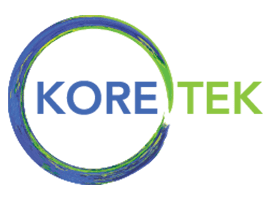While most of the US now have high speed Internet access, there still remains a portion of America that lacks broadband, high speed Internet. The fact that most federal state and increasingly local services have moved online, it is critical to get all of the remaining outliers online so that there is equal access, digital equity and true Internet For All.
The Infrastructure Investment and Jobs Act (IIJA) that was recently passed by Congress provides a whopping $65 Billion to meet the needs of underserved rural and urban communities with low or no access to online service.
A breakout of the IIJA includes a $42.5 billion grant program for states that will be used to directly upgrade inadequate broadband coverage in rural areas and other communities that are eligible.
Broadband Project Mapping
$5.3 Billion will be dispersed in $100 million payments among the fifty US States including the District of Columbia and Puerto Rico. States have the option to use the funds for project planning with an emphasis providing inexpensive broadband for communities lacking access. The projects may also include:
- Data capture
- Mapping of underserved, low access communities
- Research
- Staff Training
- etc
The massive program sets the following priorities for target areas including:
- “Unserved” communities with less than 25/3 mbps ( 25 download or 3 upload megabits per second).
- “Underserved” communities that are lacking 100/20 mbps
- Local community institutions or “anchors” including libraries, schools and hospitals (often connected to high speed fiber networks even though the local communities may not be).
- Unserved areas will be prioritized over underserved communities
- High-poverty communities will also be prioritized
Allocation of Funds for Broadband Upgrades
The bulk of the $42.5 Billion dedicated to broadband upgrades provides $37.2 billion allocated to state agencies based on the percentage of the aforementioned underserved rural communities within each state. Guidance for fair and equitable funds disbursement by State agencies will be provided by the National Telecommunications and Information Administration (NTIA).
As part of the approval process, broadband providers will be required to match a minimum 25 percent of the funding allotted to them either from a separate funding source or use their own funds to match. Some of the vendors that implement service to extremely remote areas may be eligible for waivers or reduced matching contribution requirements.
All applicants will be judged based on the following:
- The broadband access speed they can service
- The speed at which they can finish their project
- The amount of matching funds they contribute to communities/projects.
The program methodology follows in the footsteps of the American Recovery Act implemented by the Obama administration, which NTIA also oversaw. The major difference being that States are allowed to control which vendors and groups win the grants in concert with guidance provided by the NTIA.
Additional Resources
Summary State Broadband Deployment Grant Program https://www.bradley.com/-/media/files/insights/publications/2021/11/iija-broadband-summary.pdf
Broadband Communities Magazine – IIJA Overview https://www.bbcmag.com/community-broadband/broadband-expansion-under-the-infrastructure-investment-and-jobs-act
GFOA – IIJA complete overview with Broadband breakout https://www.gfoa.org/the-infrastructure-investment-and-jobs-act-iija-was
Good update on fiber network deployment in rural communities https://www.ntca.org/ruraliscool/newsroom/press-releases/2022/5/rural-broadband-providers-increasing-speeds-fiber
Internet For All https://www.internetforall.gov/
Tribal Government – Grants Overview https://www.hklaw.com/en/insights/publications/2022/01/leveraging-the-infrastructure-investment-and-jobs-act
IIJA Overview (General with Broadband breakout) https://www.ncsl.org/ncsl-in-dc/publications-and-resources/infrastructure-investment-and-jobs-act.aspx
Brookings – Deep dive into the digital divide (rural communities) https://www.brookings.edu/research/why-the-federal-government-needs-to-step-up-their-efforts-to-close-the-rural-broadband-divide/
FCC commits $800 million to six vendors for Rural Digital Opportunity Fund https://broadbandbreakfast.com/2022/09/fcc-commits-additional-800-million-from-rural-digital-opportunity-fund/
Minnesota Broadband Grant Program https://mn.gov/deed/programs-services/broadband/grant-program
Cisco Annual Internet Report 2018-2023 https://www.cisco.com/c/en/us/solutions/collateral/executive-perspectives/annual-internet-report/white-paper-c11-741490.html
Update: Broadband in the US https://www.businesswire.com/news/home/20220823005213/en/Fiber-Broadband-Association-Provides-Update-on-the-Status-of-Broadband-in-the-U.S.
About Us
Founded by optical network specialists, Kore-Tek is widely recognized for their unparalleled expertise in critical network infrastructure, providing everything from fiber network architectures to multi-technology optical networking, routing and switching implementations.
Trusted and credentialed by major equipment manufacturers and technology service providers — and backed by decades of experience — Kore-Tek engineers have planned, designed, and managed some of the most relied-upon public and private networks in use today, improving network operations and making complex, next generation digital transformations, simple.
Businesses depend on networks. Network professionals depend on Kore-Tek.
